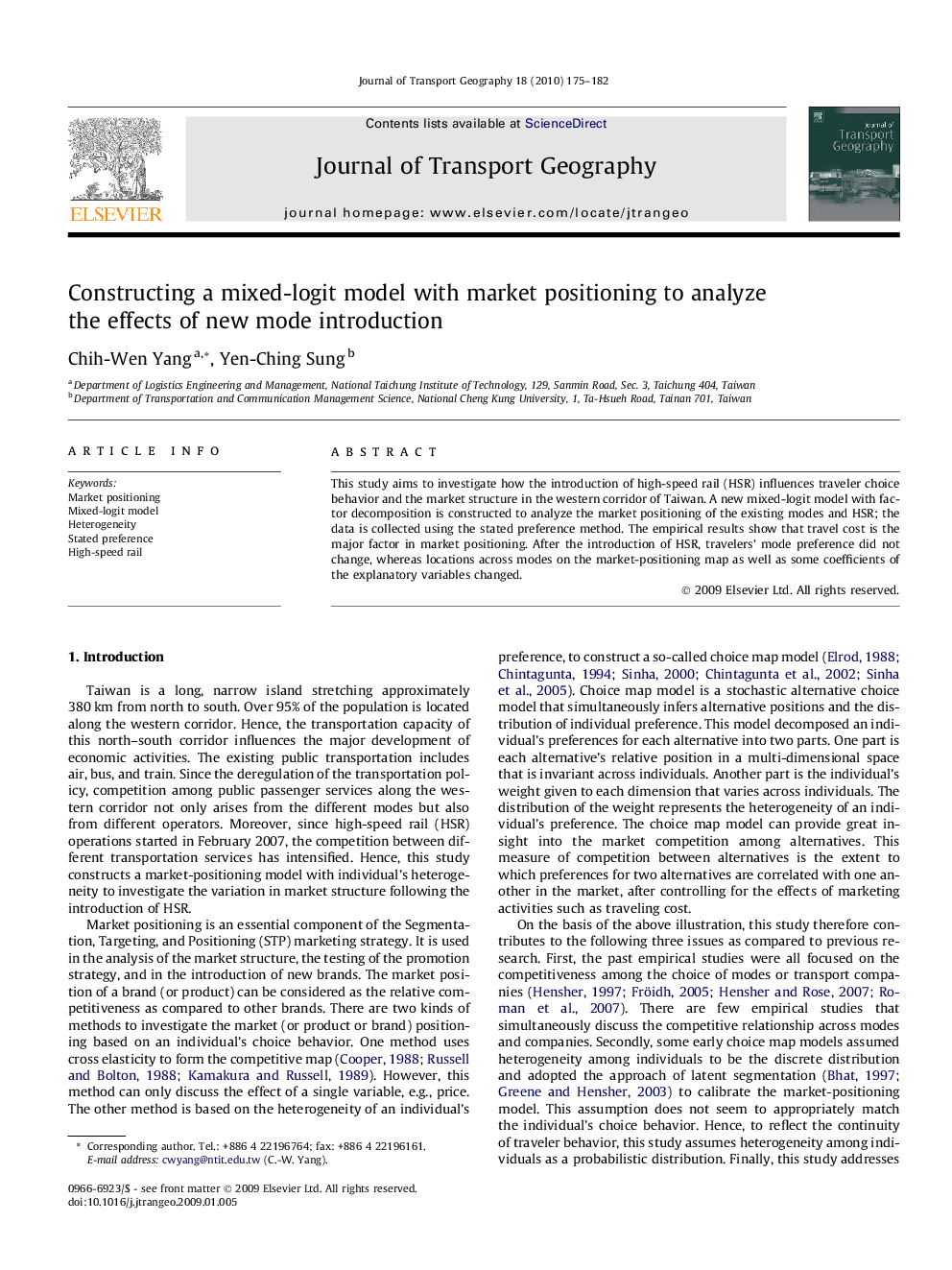| Article ID | Journal | Published Year | Pages | File Type |
|---|---|---|---|---|
| 1059863 | Journal of Transport Geography | 2010 | 8 Pages |
Abstract
This study aims to investigate how the introduction of high-speed rail (HSR) influences traveler choice behavior and the market structure in the western corridor of Taiwan. A new mixed-logit model with factor decomposition is constructed to analyze the market positioning of the existing modes and HSR; the data is collected using the stated preference method. The empirical results show that travel cost is the major factor in market positioning. After the introduction of HSR, travelers’ mode preference did not change, whereas locations across modes on the market-positioning map as well as some coefficients of the explanatory variables changed.
Related Topics
Life Sciences
Environmental Science
Environmental Science (General)
Authors
Chih-Wen Yang, Yen-Ching Sung,
